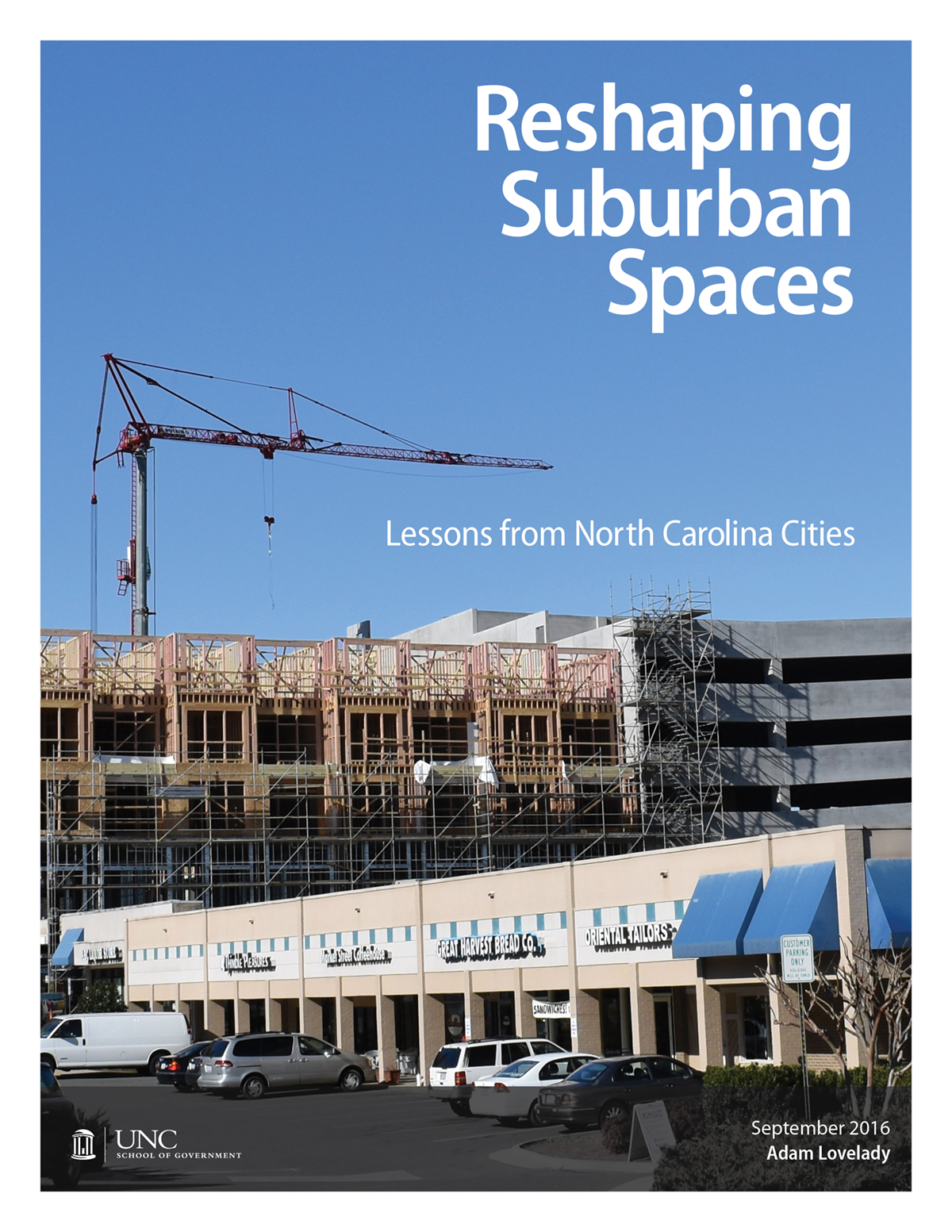Reshaping Suburban Spaces: Lessons from North Carolina Cities
A shift is happening. North Carolina communities grew significantly through the twentieth century, but they grew with low density suburban development. Now communities are grappling with questions about how to reshape these suburban spaces. What is the local government’s role in this transition? How does a city or county encourage the redevelopment of suburban spaces? And what are the practical and political implications?
Reshaping suburban spaces is a complex issue, raising questions of zoning, finance, utilities, transportation, and more. This report explores how communities are experimenting to address those challenges. It is organized into three parts:
- “Designing Change” explores the infrastructure and urban design elements that shift a place from suburban to urban. These design considerations apply to private redevelopment through zoning standards, as well as to public improvements required through exactions or provided through public investment.
- “Zoning Change” considers the different approaches to zoning—site-specific conditional zoning, development agreements, and form-based codes—that North Carolina municipalities have used to accommodate suburban redevelopment.
- “Financing Change” outlines the tools and approaches for public and private participation in financing redevelopment.
Although this report is rooted in North Carolina law, the lessons provided are not limited to North Carolina cities. Many of the topics discussed—including many of the design considerations, zoning approaches, and financing options—are not unique to North Carolina.




